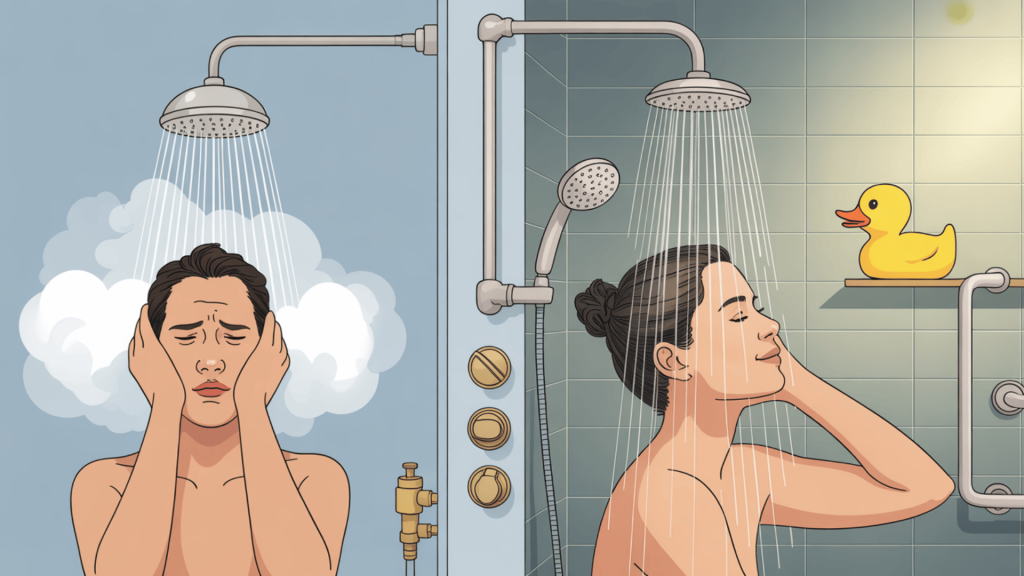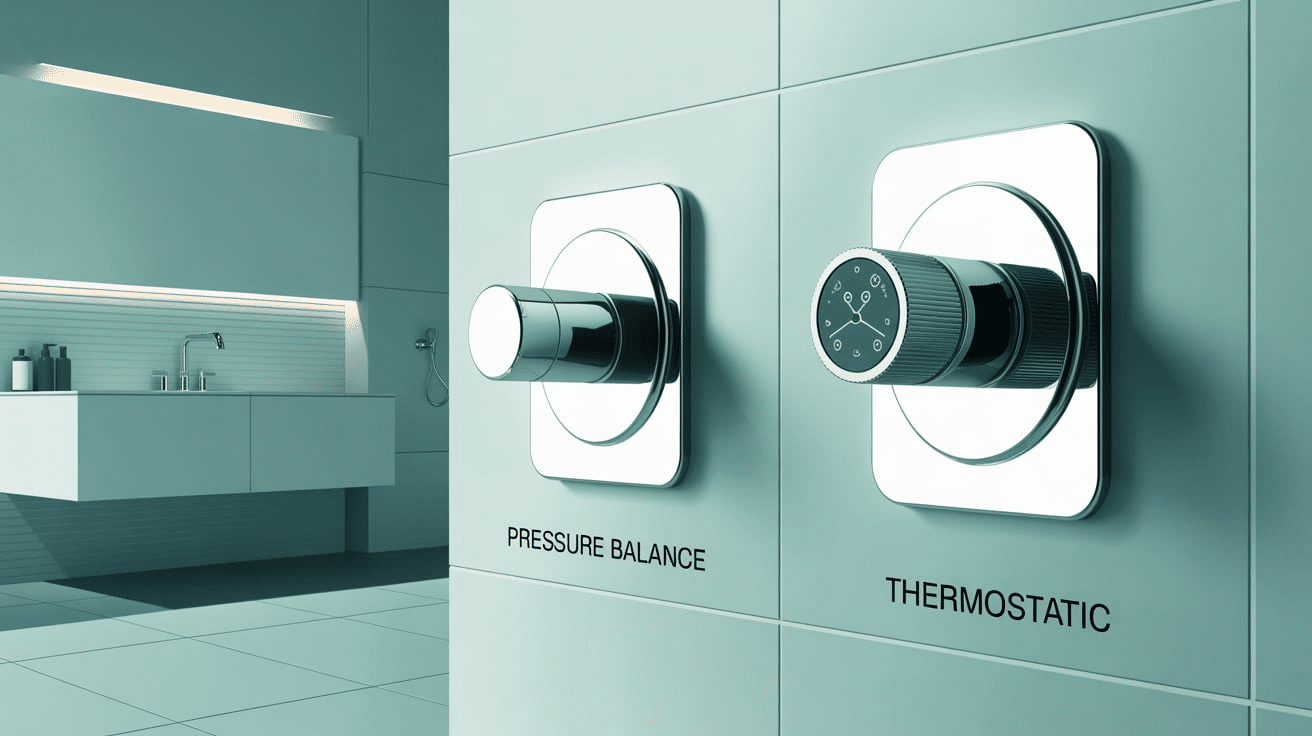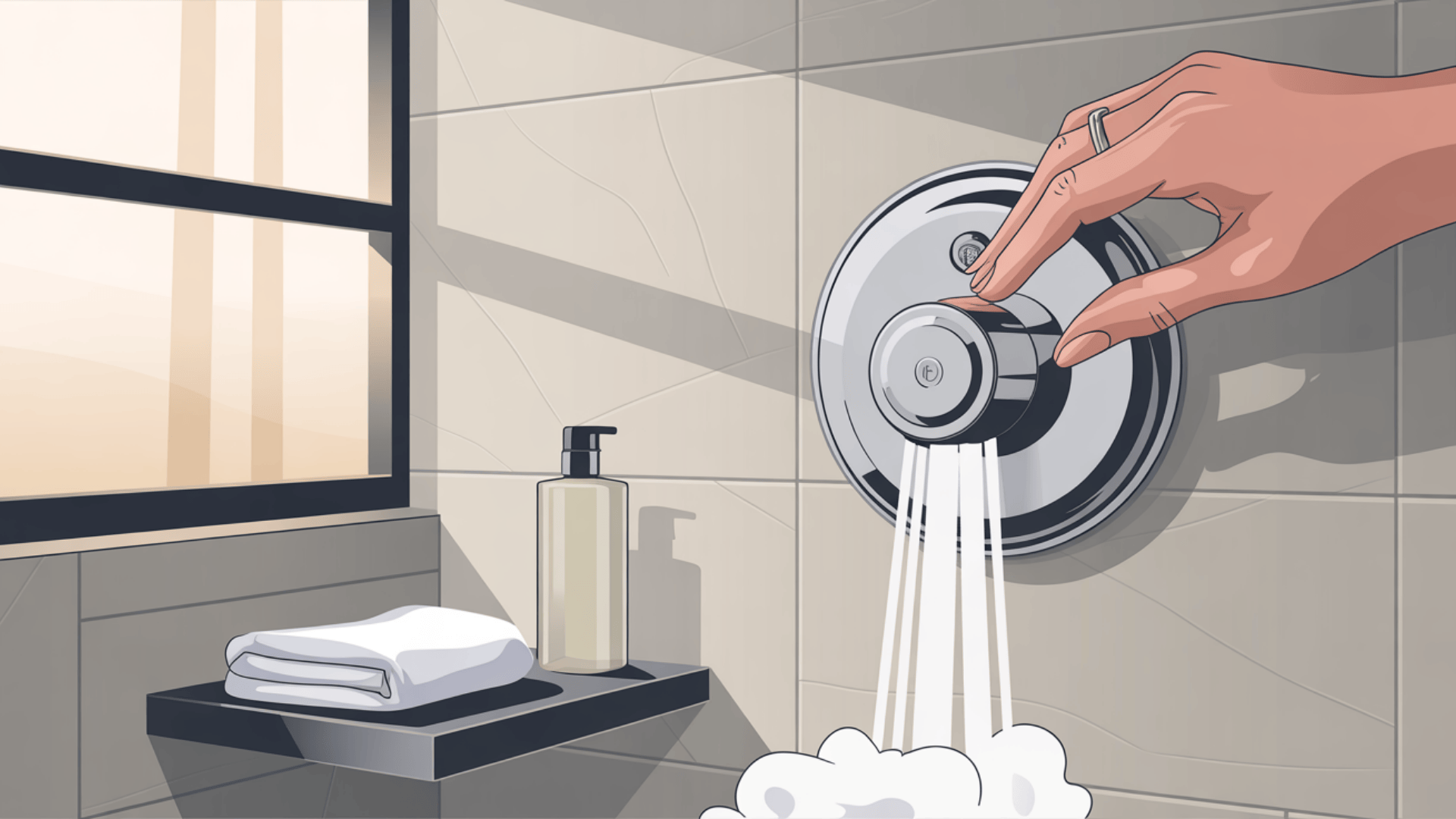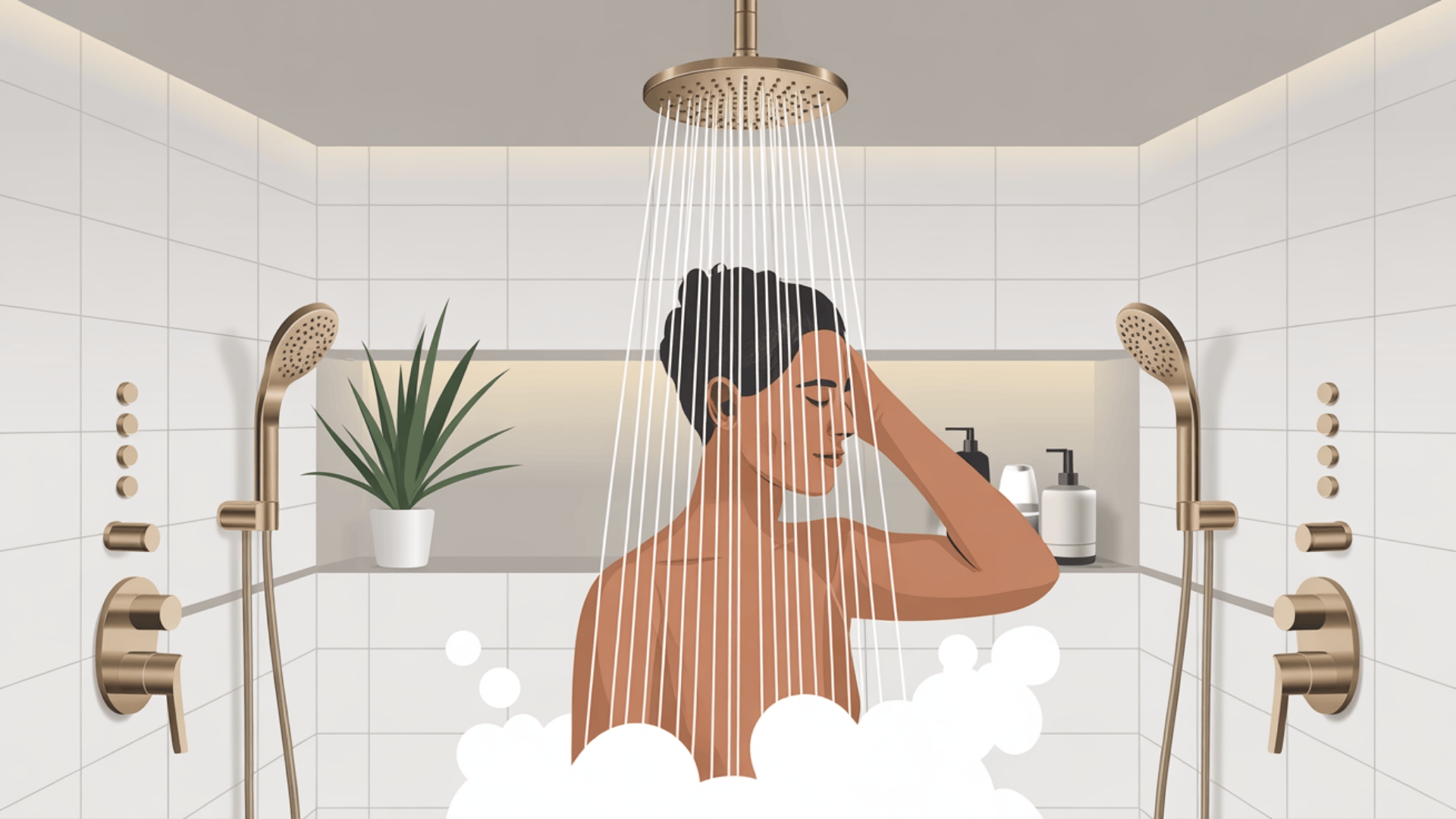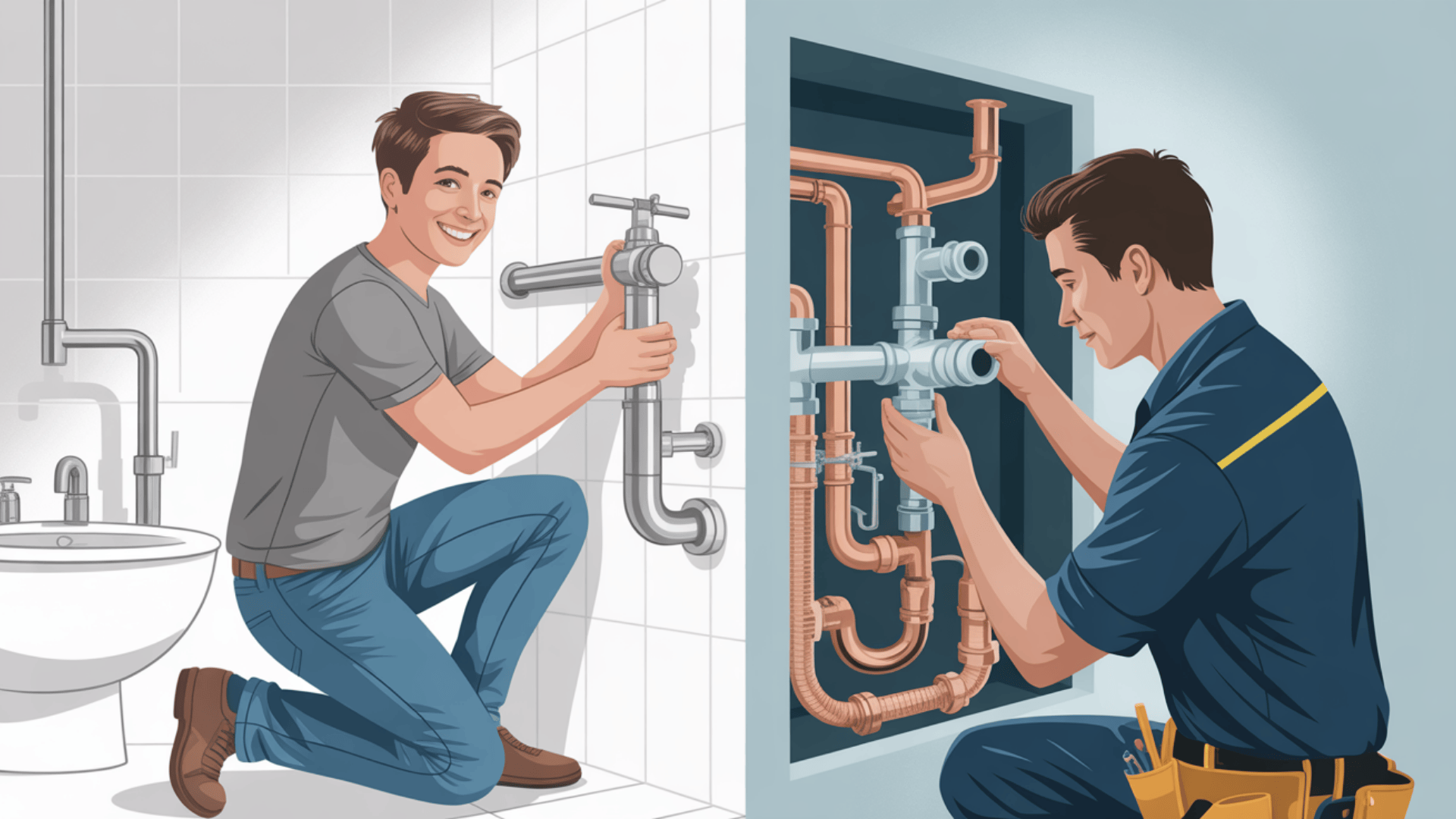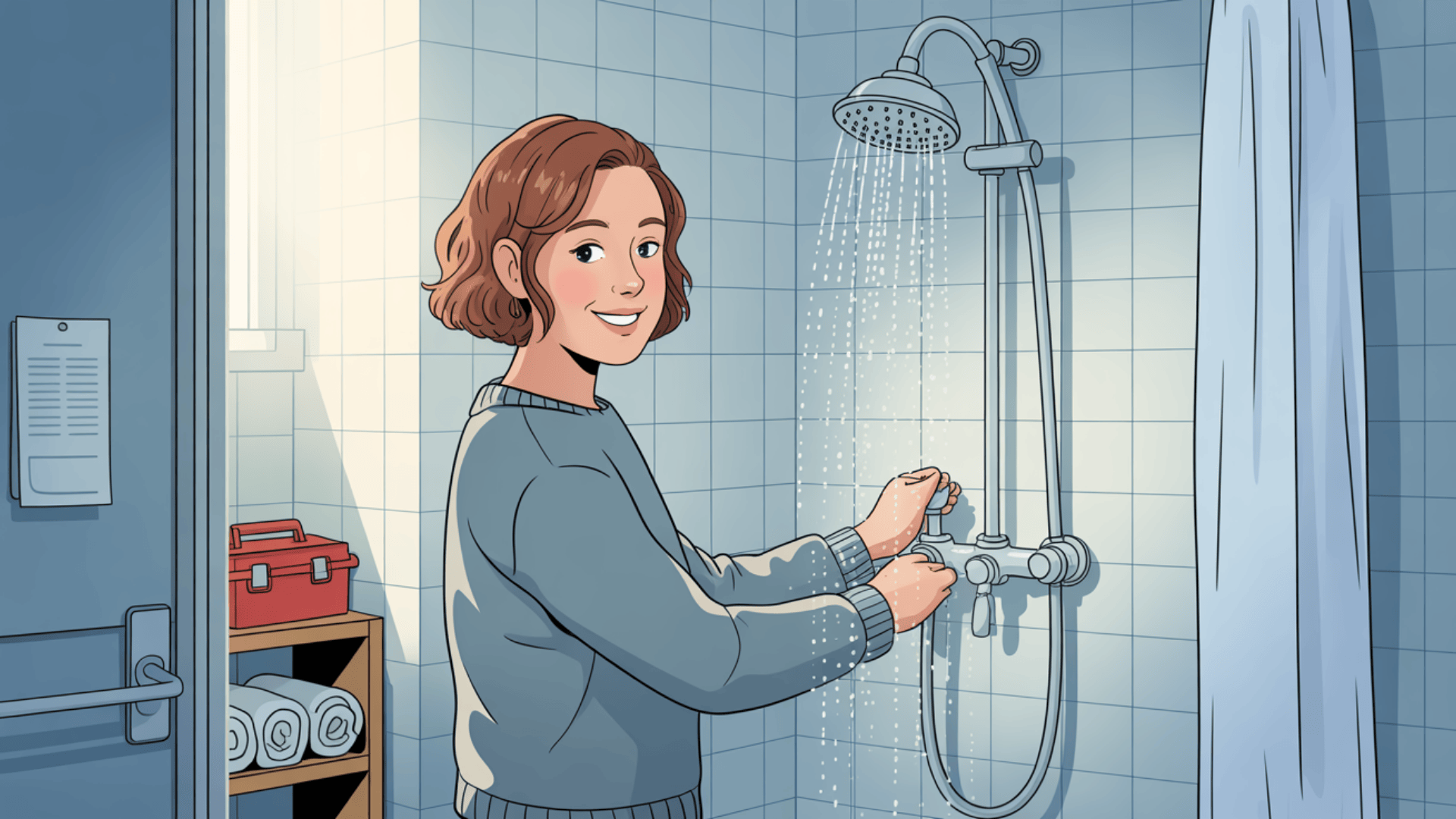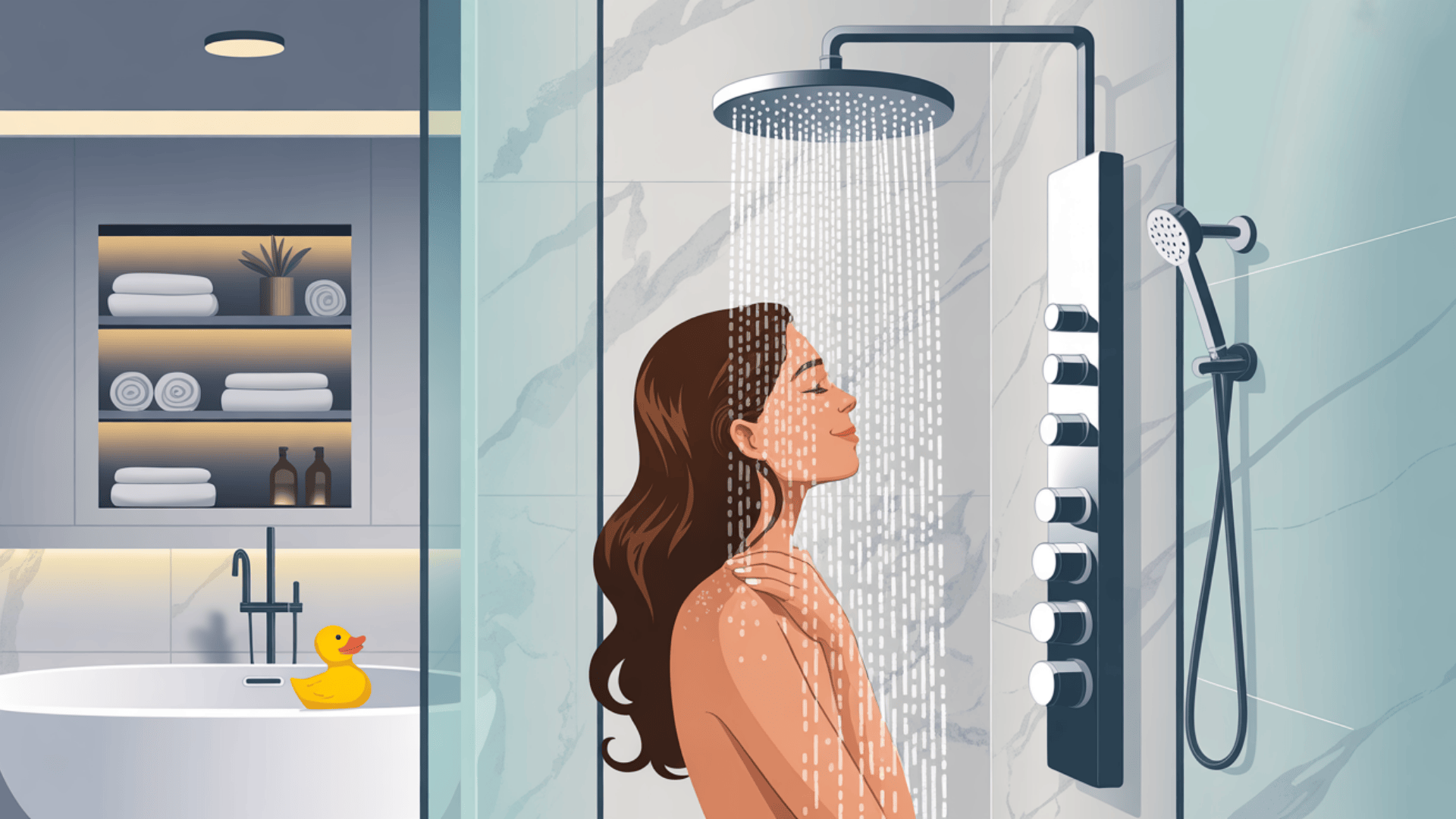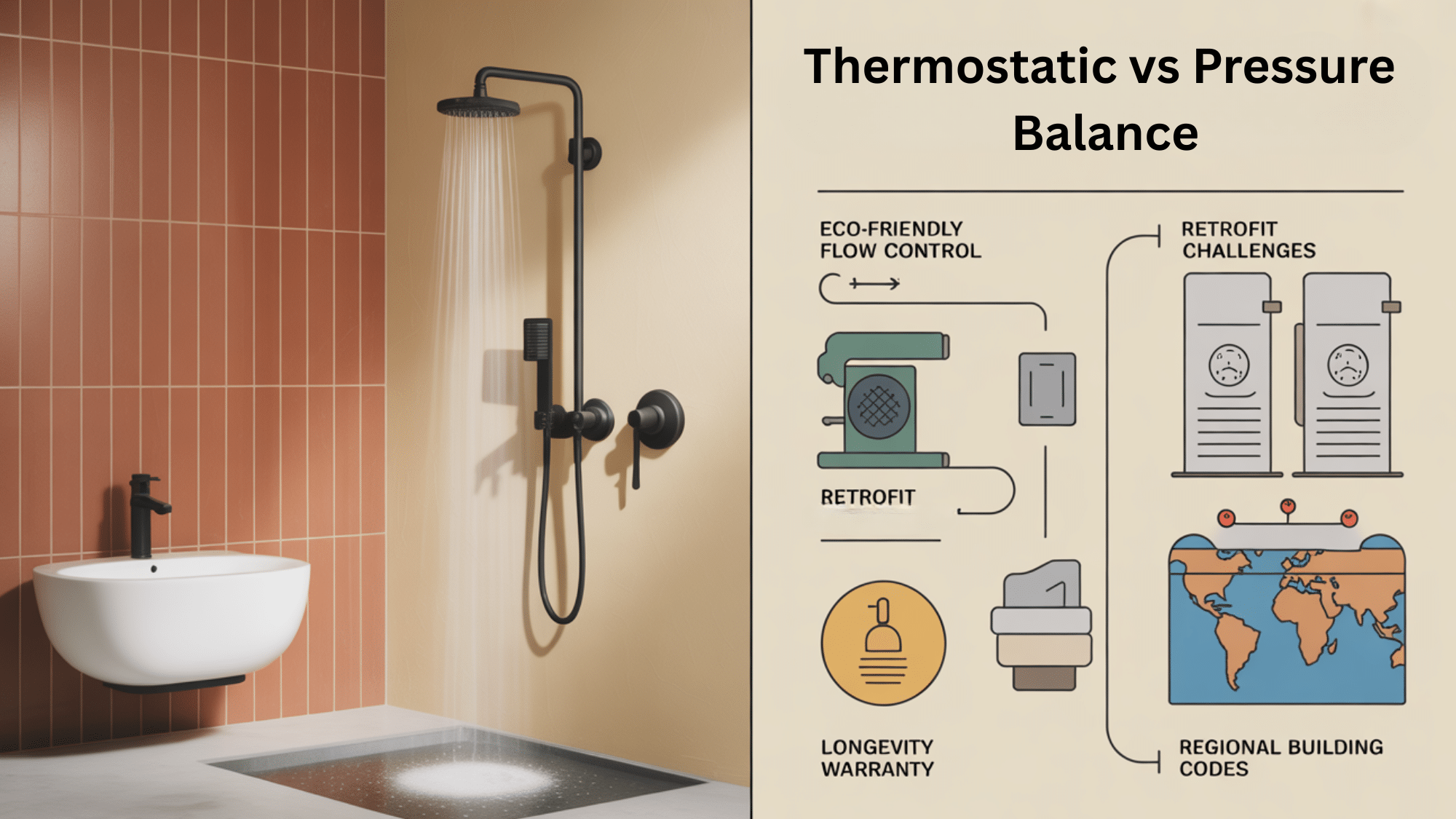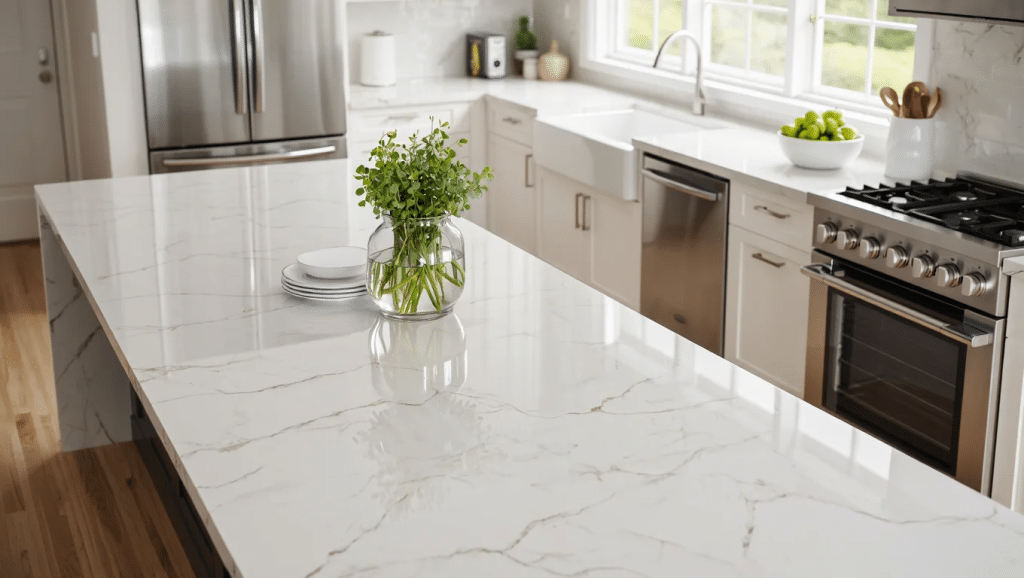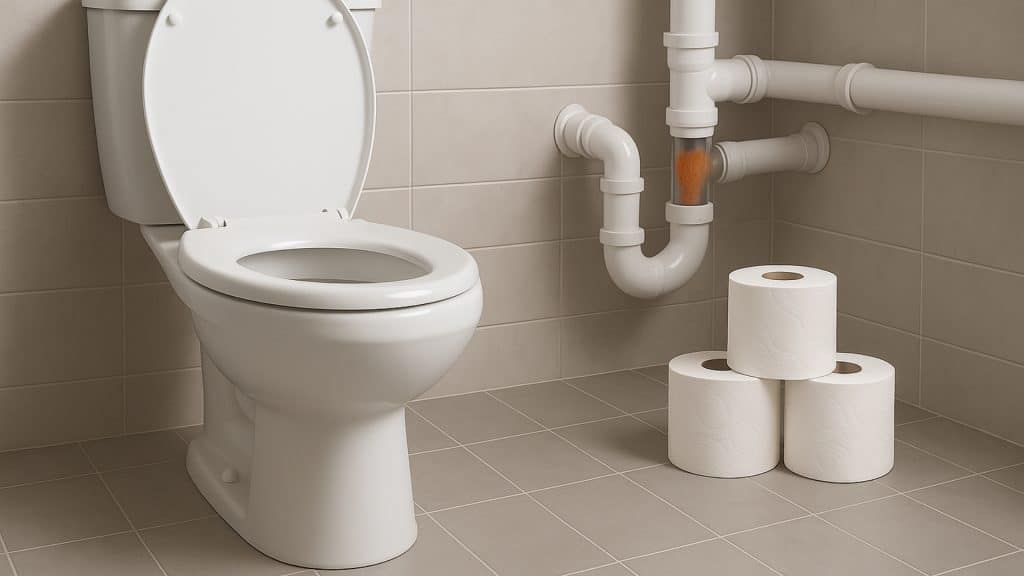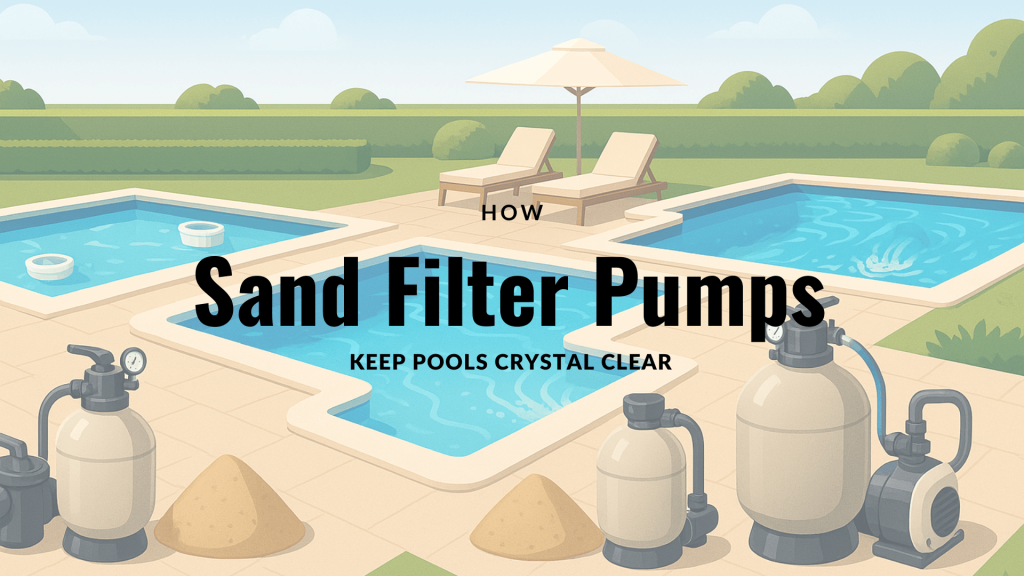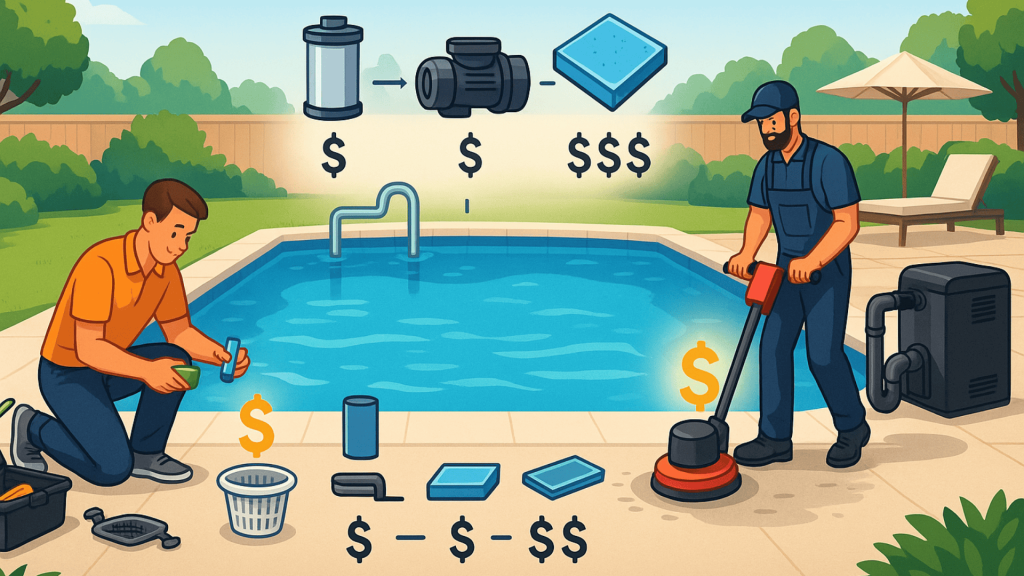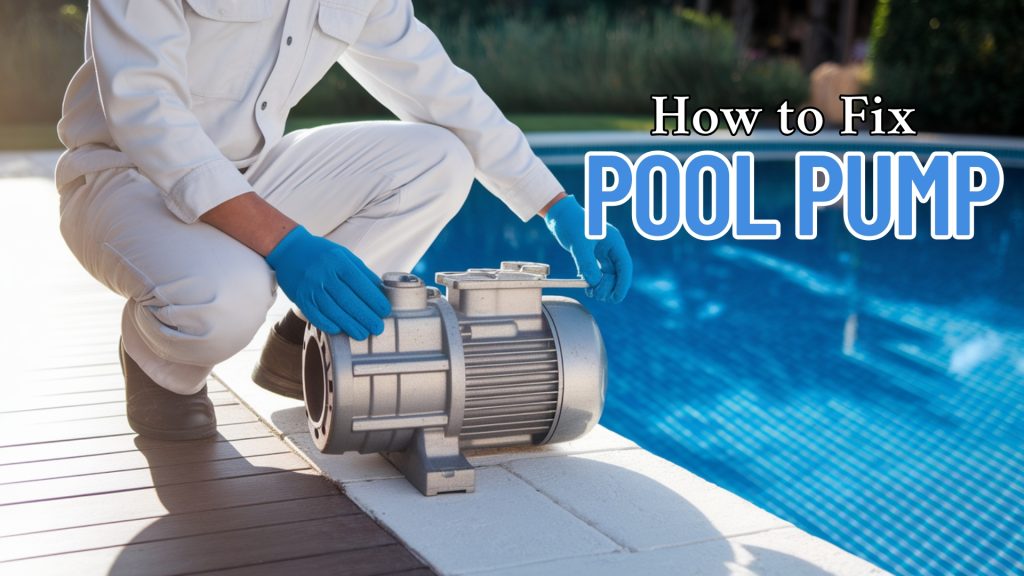Stepping into a shower that suddenly scalds or freezes isn’t just uncomfortable—it’s dangerous.
Behind your bathroom wall, two competing technologies silently battle to protect you: thermostatic and pressure balance valves.
The difference isn’t just technical jargon; it impacts your family’s safety, comfort, and wallet.
Homeowners often install the wrong system, suffering consequences for years without realizing better options exist.
Understanding these hidden controllers revolutionizes your shower experience, especially for households with children or elderly members.
The right choice adapts to your specific needs rather than following generic recommendations that might leave you with lukewarm results—literally.
How Each Valve Works
The mechanical design of shower valves might seem complex, but understanding their basic operation reveals why they perform so differently in everyday use.
These ingenious devices employ distinct mechanisms to solve the same problem—preventing temperature fluctuations during showers.
Pressure Balance Valve
This valve uses a simple piston or diaphragm mechanism.
When cold water pressure drops (say, during a toilet flush), it instantly reduces hot water flow to prevent scalding.
- Single-Handle Design: Twist to adjust both temperature and flow.
- No Temperature Memory: You reset the mix every time.
- Key Component: A pressure-sensitive cartridge that shifts to balance water ratios.
Most common in shower installations due to their reliability and affordability.
Thermostatic Valve
Thermostatic valves automatically control shower temperature.
They use a wax or gas element that physically adjusts water mixing to maintain your exact temperature setting.
- Dual Controls: Separate knobs for temperature and flow.
- Temperature Lock: Once set, it holds your preference.
- Safety Feature: Auto-shuts off if cold supply fails.
Ideal for premium installations where precision temperature control is desired.
Temperature Control and Safety
While both valve types offer protection against scalding, they achieve this through fundamentally different approaches with varying levels of precision and reliability.
Understanding these differences becomes essential when evaluating which valve type aligns with your household’s specific needs and vulnerability factors.
| FEATURE | PRESSURE BALANCE | THERMOSTATIC |
|---|---|---|
| Accuracy | ±3°F | ±1°F |
| Max temp setting | No built-in limit | Adjustable cap (e.g., 104°F) |
| Best for | Most adult households | Families with children/elderly |
| Safety features | Basic protection | Advanced monitoring |
| Regulatory status | Standard residential | Often mandatory in commercial settings |
Choose based on your household composition and safety needs.
Thermostatic valves provide superior precision for vulnerable users, while pressure balance systems offer adequate protection for most adult households.
User Experience and Convenience
The operational characteristics of each valve system significantly influence daily shower interactions and satisfaction levels.
The distinction between thermostatic and pressure balance technologies extends beyond mere technical specifications to impact user comfort and operational simplicity.
Pressure Balance Systems: Manual Calibration
Pressure balance valves require adjustment with each use, necessitating a recalibration of your preferred temperature setting.
These systems are fundamentally limited to single-output applications, as they cannot maintain consistent temperatures across multiple water delivery points.
Their straightforward operation provides accessibility without complex controls—rotate the handle to activate and adjust.
Operational Contrasts: Temperature recalibration is required with each use, creating a consistent morning ritual of finding the perfect setting.
Application Versatility: Best suited for single fixture deployment with straightforward plumbing configurations.
Thermostatic Systems: Precision Consistency
Thermostatic valves consistently maintain your established temperature preference, even when water is diverted to other household fixtures.
Their sophisticated design supports simultaneous operation of multiple shower components—ceiling rainfall fixtures, handheld units, and body sprays—without temperature fluctuation.
Premium models often integrate diverter functionality, streamlining control interfaces.
Operational Contrasts: Maintained temperature memory eliminates daily adjustments, providing immediate comfort upon activation.
Application Versatility: Enables comprehensive multi-outlet configurations for customized shower experiences.
Installation and Maintenance: The Hidden Considerations
Different valve systems require varying levels of technical expertise for proper installation.
This can impact initial costs and future accessibility when evaluating thermostatic versus pressure balance options.
Additionally, the maintenance schedules, potential failure points, and replacement part availability differ substantially between valve types.
Understanding these practical considerations helps ensure that your valve choice aligns with your immediate needs, your comfort level for ongoing maintenance, and your long-term residence plans.
Pressure Balance: Refined Simplicity
Pressure balance valves are retrofit-ready and fit most existing plumbing setups.
They’re DIY-friendly, requiring basic tools and 1–2 hours for installation.
Low upkeep means replacing cartridges every 5–7 years at $20–$50.
Thermostatic: Complex but Customizable
Thermostatic valves require greater space, requiring larger wall cavities for additional components.
Professional installation typically takes 3–4 hours and costs $150–$300 in labor.
If you have hard water, descaling every 6 months prevents wax sensor clogs.
Watch Out: Thermostatic valves may need anti-scald compliance checks in some states.
Thermostatic vs Pressure Balance: Which is More Cost-Effective?
A comprehensive cost analysis must account for installation expenses, expected lifespan, maintenance requirements, and potential energy or water savings over time.
| EXPENSE | PRESSURE BALANCE | THERMOSTATIC |
|---|---|---|
| Valve Unit | $50–$150 | $200–$500+ |
| Installation | $100–$200 | $250–$500 |
| Lifespan | 10–15 years | 15–20 years |
| Maintenance/Yr | $5–$10 | $15–$30 |
Budget Takeaway: Pressure balance costs 60% less upfront but lacks long-term customization.
While the upfront price difference between valve types is substantial, viewing this investment through a total cost of ownership lens provides a more accurate picture of long-term value.
Best Use Cases and Recommendations
Different household situations call for tailored valve solutions rather than a one-size-fits-all approach. Consider these scenarios when making your selection:
Pressure Balance is Your Perfect Match When:
Pressure balance valves offer practical solutions for specific living situations and priorities.
These systems shine in particular circumstances where simplicity and affordability take precedence.
- You’re a Renter or First-Time Buyer: Ideal for temporary living situations or starter homes where long-term investment isn’t the priority.
- Your Budget is Tight: When initial costs matter more than premium features.
- You have a Simple Setup: Perfect for basic, single-showerhead configurations.
- You’re Comfortable with Basics: When precise temperature control isn’t critical.
- You Need a Quick Solution: When installation speed and simplicity are priorities.
Most plumbers can install these systems quickly, typically at 30-40% lower cost than thermostatic alternatives.
Go Thermostatic When:
Thermostatic systems are the premium choice for individuals with specific needs.
They are ideal for those who prioritize precise temperature control and advanced features in their shower experience.
- You’re Building Your Forever Home: Making a long-term investment in your property.
- You Have Young Children or Seniors: When temperature safety is non-negotiable.
- You Crave Luxury: For spa-like showering experiences.
- Your Dreams Include Multiple Jets: Planning a complex shower system with various water sources.
- You Value Precision: When consistent temperature is worth the investment
Matching valve characteristics to your particular living situation maximizes both comfort and value, ensuring everyone enjoys their shower experience safely.
Pros and Cons: Understanding Your Options
Understanding the key differences between pressure balance and thermostatic shower valves can help you make the right decision for your home.
This table highlights the essential factors to consider before purchasing.
| FEATURE | PRESSURE BALANCE | THERMOSTATIC |
|---|---|---|
| Cost | More affordable | Premium price |
| Installation | DIY-friendly | Professional recommended |
| Temperature | ±3°F, no memory | ±1°F, remembers settings |
| Safety | Basic protection | Temperature caps, auto-shutoff |
| Controls | Single handle | Separate flow/temp knobs |
| Best For | Budget, basic needs | Families, luxury systems |
Consider your household composition, budget constraints, and desired shower experience when making this important decision.
Additional Considerations
Beyond the core functional differences between valve types, several supplementary factors can influence your selection process and satisfaction with the final installation.
These considerations encompass environmental impact, structural compatibility with your existing bathroom, and manufacturer support policies.
1. Water Conservation
Both valve types can have flow restrictors, but thermostatic models allow better fine-tuning.
Newer thermostatic valves include eco-settings that reduce flow while maintaining temperature, potentially saving thousands of gallons annually.
2. Retrofit Challenges
When upgrading from an older system, consider the existing plumbing cavity.
Pressure balance valves typically require a 3½-inch wall cavity, while thermostatic systems may need 4 inches or more.
If your walls need modification, this could mean additional construction costs.
3. Warranty Coverage
Quality matters for both types, but premium thermostatic valves often come with longer warranties-typically 5-7 years compared to 1-3 years for pressure balance models.
This reflects both their higher price point and expected longevity.
4. Regional Building Codes
Plumbing code requirements vary by location and can dictate minimum performance standards, mandatory safety features, or even which valve types are permitted in new construction.
Some municipalities have adopted strict anti-scald regulations that effectively require thermostatic valves in certain applications.
Remember that the best shower valve is one that matches your lifestyle needs and your home’s plumbing infrastructure.
Wrapping It Up
Your perfect shower experience hinges on a small but mighty component hidden within your walls.
Thermostatic valves offer precision and flexibility for growing families and luxury setups, while pressure balance systems provide reliable protection on tighter budgets.
Consider your household’s unique needs—temperature sensitivity, renovation timeline, technical requirements, and financial priorities—before making this significant decision.
The ideal valve transforms daily routines into consistently comfortable experiences rather than temperature-guessing games.
Make your selection a deliberate choice rather than an afterthought, and enjoy the perfect shower temperature every single time.
The battle of the valves continues in your comments!
Tell us: are you Team Thermostatic or Team Pressure Balance, and what won you over?

